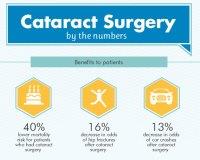Developed By-Gissel Upchurch
If you're considering vision correction options, SMILE eye surgical procedure could be on your radar. This ingenious procedure includes developing a tiny lenticule in the cornea to attend to nearsightedness and astigmatism. Unlike traditional LASIK, it's much less invasive and promises quicker recuperation. However, while there are substantial benefits, there are likewise threats entailed. Comprehending both elements can assist you make an enlightened decision concerning your eye health and wellness. What's the recuperation procedure like, and what should you expect?
Understanding the SMILE Procedure
The SMILE treatment, or Little Laceration Lenticule Removal, is a minimally invasive eye surgery developed to correct vision problems like nearsightedness and astigmatism.
Throughout this treatment, a laser develops a little lenticule, or lens-shaped tissue, within the cornea. You won't require any type of stitches, as the tiny laceration permits a quick healing.
The surgeon after that removes the lenticule through this tiny cut, improving your cornea to boost your vision. Unlike standard LASIK, SMILE does not need the development of a huge flap, which can lead to fewer problems.
You'll locate that this strategy is less disruptive to the corneal structure, potentially enhancing security. Understanding the treatment helps you feel extra confident as you consider your alternatives for vision improvement.
Benefits of SMILE Eye Surgical Procedure
While taking into consideration vision adjustment options, you could find that SMILE eye surgical procedure offers a number of compelling benefits.
Initially, it's minimally intrusive, requiring only a little incision, which indicates much less disturbance to your eye framework. This results in quicker recuperation times and much less discomfort compared to standard LASIK.
You'll additionally value its accuracy; SMILE utilizes sophisticated laser modern technology to reshape the cornea, providing outstanding results for nearsightedness and astigmatism.
Additionally, several clients report boosted visual top quality, with less instances of glare or halos. Considering that there's https://www.dovepress.com/corneal-donation-current-guidelines-and-future-direction-peer-reviewed-fulltext-article-OPTH for a corneal flap, your eyes stay extra steady post-surgery.
Finally, the treatment normally takes just a couple of mins, enabling you to go back to your everyday activities quicker than with other approaches.
Potential Risks and Recovery Process
Although SMILE eye surgery is usually secure, it's important to be aware of potential risks that can arise during or after the procedure. Some people might experience temporary adverse effects like completely dry eyes, glow, or halos around lights.
In unusual cases, issues such as infection, vision loss, or the need for additional surgical procedure can occur.
Healing generally entails a couple of days of rest and avoiding laborious activities. You ought to follow your surgeon's post-operative instructions thoroughly, consisting of using prescribed eye declines and going to follow-up visits.
https://mgyb.co/s/hhRiY discover improved vision within a couple of days, yet complete recovery can take weeks. Remaining client and giving your eyes time to recover is essential for the best outcome.
Verdict
In conclusion, SMILE eye surgical procedure provides a modern, minimally intrusive choice for remedying nearsightedness and astigmatism. With its quicker healing time and minimized discomfort, it's an attractive choice for lots of. Nevertheless, it's essential to weigh the prospective dangers against the benefits. By staying notified and following post-operative treatment, you can optimize your possibilities of an effective end result. If you're considering this procedure, talk to your eye care specialist to identify if it's right for you.

